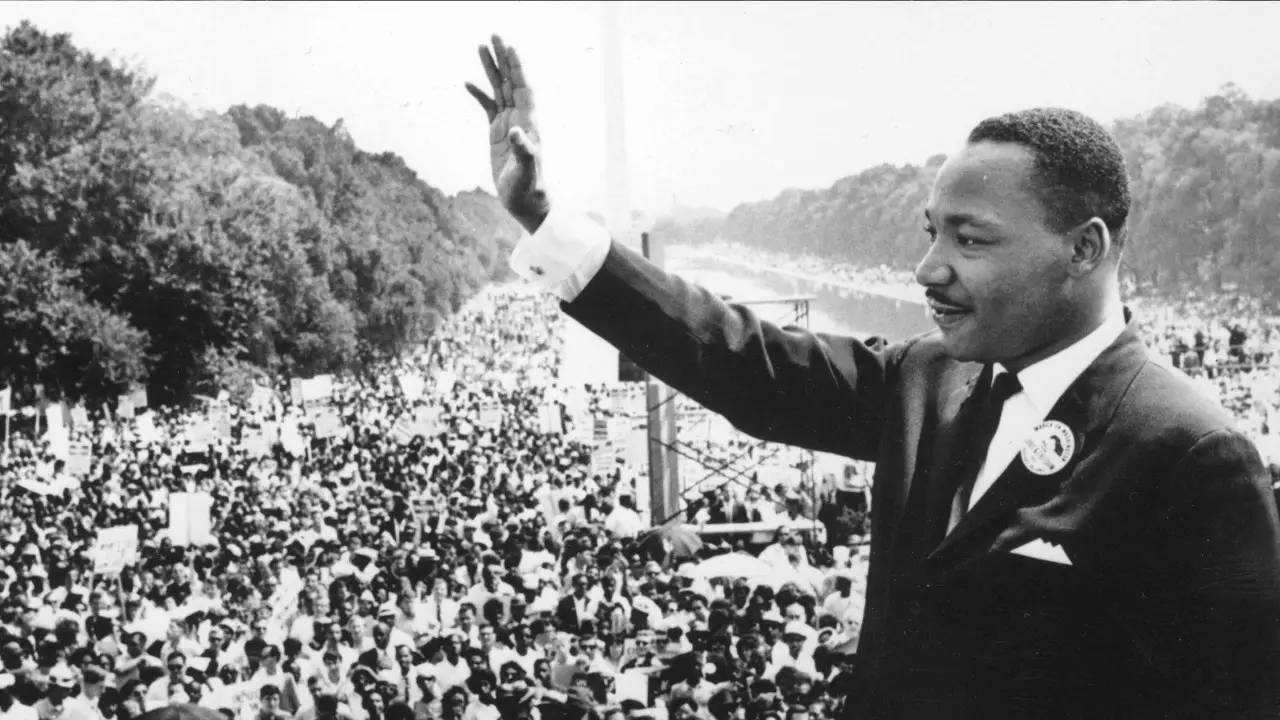The whitewashing—and resurrection—of Dr. King’s legacy
金博士遺產的洗白和復興
By Eddie S. Glaude Jr.
文/小艾迪·S·格勞德
ON SEPT. 20, 1966, IN THE SMALL TOWN of Grenada, Miss., Martin Luther King Jr. would not get out of bed.
1966年9月20日,在密西西比州的格林納達小鎮上,馬丁·路德·金說什么也不肯起床。
Andrew Young, his closest adviser, tried everything.
他最親密的參謀安德魯·楊什么辦法都試過了。
He used all the techniques they had learned over the course of the movement when any one of them faced debilitating exhaustion.
他把他們在那次運動中學到的,用來對付筋疲力竭的所有技巧都用上了。
Nothing worked.
卻無一例外地都沒奏效。
This was not exhaustion. King had fallen into a deep depression, and he would not budge.
因為金并不是覺得累了,而是陷入了深深的沮喪,并且絲毫不愿回心轉意。
King’s bout hit in the midst of the Southern Christian Leadership Conference’s efforts to desegregate schools in Grenada County.
金這次發作正值南部基督教領袖聯合會為廢除格林納達縣各學校的種族隔離制度而努力的時候。
He had witnessed, once again, the human capacity for evil.
他目睹,而且是再次目睹了人類能邪惡到何等地步。
As 150 black students entered John Rundle High School and Lizzie Horn Elementary School, an angry mob gathered outside.
150名黑人學生踏入約翰·倫德爾高中和麗齊·霍恩小學時,一群憤怒的暴徒也聚集在了學校外面。
White students were dismissed at midday.
中午時分,白人學生們都放學了。
Half an hour later, black students emerged.
半小時后,黑人學生出現了。
The mob attacked the children.
暴徒便上前襲擊了他們。
Grown men descended upon 12-year-old Richard Sigh and broke his leg with lead pipes.
一群成年男子突然襲擊了12歲的理查德·賽,并用鉛筒打斷了他的腿。
Others laughed as they pummeled a girl in pigtails.
另一些人則笑著毆打了一個扎著馬尾辮的女孩。
No wonder King went to bed.
難怪金躺到床上去了。
Near the end of his life, King confronted the uncertainty of his moral vision.
因為在他生命的最后時刻,金的道德愿景反倒變模糊了。
He had underestimated how deeply the belief that white people matter more than others—what I call the value gap—was ingrained in the habits of American life.
他低估了“白人比其他人種的人更重要”這一信念——我稱之為“價值鴻溝”——在美國人的生活習慣中是多么的根深蒂固。

He saw that white resentment involved more than fatigue with mass demonstrations and demands for racial equality,
他看到,白人的不滿針對的不僅僅是對大規模示威活動和呼吁種族平等的要求的厭倦,
and was not simply a sin of the South. It was embedded in the very psyche of white America.
而且,這一情緒也不單單是南方的罪過,這種情緒已經深深地植根于美國白人內心了。
In King’s final book, Where Do We Go From Here: Chaos or Community?, drafted in early 1967,
在他的最后一本書,1967年初擬寫的《我們將何去何從:混亂還是共同體?》中,
he argued in part that white supremacy stood in the way of America’s democracy,
金指出,“白人至上”在一定程度上阻礙了美國民主的發展,
that it was an ever-present force in frustrating the dreams of the nation’s darker-skinned citizens.
并且一直都在挫傷這個國家黑人公民的夢想。
At the heart of it was a distorted understanding of the meaning of racial justice.
這種觀念的核心是對“種族平等”的誤解。
He wrote: Negroes have proceeded from a premise that equality means what it says,
他寫道:黑人從平等就意味著它的字面意思這個前提出發,
and they have taken white Americans at their word when they talked of it as an objective.
在白人說話間將其作為奮斗目標時,他們就相信了白人的話,對他們深信不疑。
But most whites in America proceed from a premise that equality is a loose expression for improvement.
但大多數美國白人是從平等就是改進的不那么精確的表達這一前提出發的。
White America is not even psychologically organized to close the gap—essentially it seeks only to make it less painful and less obvious but in most respects to retain it.
從心理的角度來講,白色美國甚至根本就不是為了彌合這一鴻溝而組建起來的——實質上,它只是想讓這一鴻溝變得不那么痛苦、不那么明顯,而且在大多數時候,他們是想保留這一鴻溝的。
This is a devastating judgment about our so-called national commitment to progress.
這一事實無異于對我們所謂的,全國上下齊心協力追求進步的承諾下了一個毀滅性的決斷。
It reduces racial justice to a charitable enterprise by which white people “do good” for black people.
因為它將種族平等貶低成了白人為黑人“做好事”的慈善事業。
This, in turn, provides white Americans with a necessary illusion that preserves the idea of innocence and insulates their conscience or, perhaps, their soul from guilt and blame.
這一認識又反過來為美國白人提供了一種必要的錯覺,讓他們始終覺得自己清白無辜,讓他們的良心或者內心免于內疚和責備。
譯文由可可原創,僅供學習交流使用,未經許可請勿轉載。


